Improvement of the Mechanical Properties of 30CrNi2MoVA through Ultrasonic-Milling in Certain Key Components
Abstract
:1. Introduction
2. Experimental Section
2.1. Experimental Materials and Testing System
2.2. Advanced Ultrasonic-Milling Composite Surface Modification (AUMSM) Technology
2.3. Fatigue Test Conditions
3. Results and Analysis
3.1. Surface Roughness and Surface Topography
3.2. Microhardness
3.3. The Ideal Compressive Stress
3.4. Microstructures
3.5. Friction and Wear Properties
3.6. Fatigue Life
3.7. Environmental Experiment Results
4. Conclusions
- By AUMSM treatment, it eliminated the uneven grooves caused by conventional cutting, and the surface roughness was reduced from 1.16 μm to 0.32 μm.
- The surfaces have good coincidence, and the surface hardness after the AUMSM treatment was increased by 40% than the matrix hardness, where the surface hardened layer is about 900 μm in depth, far deeper than that of cutting specimens to 500 μm.
- The material processed by AUMSM technology has suitable compressive stress and strong wear resistance. The fatigue life of the pump head connection shaft was increased by more than 11 times. Moreover, the corrosion resistance of the material is improved by UCSM. The results of this study are significant for the design of key components that help to improve their durability and reliability.
Author Contributions
Funding
Institutional Review Board Statement
Informed Consent Statement
Data Availability Statement
Conflicts of Interest
References
- Liu, X.C.; Zhang, H.W.; Lu, K. Strain-Induced ultrahard and ultrastable nanolaminated structure in Nickel. Science 2013, 342, 337–340. [Google Scholar] [CrossRef]
- Yasuoka, M.; Wang, P.; Zhang, K. Improvement of the fatigue strength of SUS304 austenite stainless steel using Ultrasonic nanocrystal surface modification. Surf. Coat. Technol. 2013, 218, 93–98. [Google Scholar] [CrossRef]
- Zhu, Y.L.; Wang, Y.L.; Bian, F.L. Progresses on Research and Application of Metal Ultrasonic Surface Enhancement Technologies. J. Mech. Eng. 2014, 50, 35–45. [Google Scholar] [CrossRef]
- Chen, L.; Wang, H.B.; Liu, D. Surface nanocrystallization of C45E4 steel by ultrafast electropulsing-ultrasonic superficial treatment. J. Wuhan Univ. Technol. (Mater. Sci.) 2017, 32, 1426–1431. [Google Scholar] [CrossRef]
- Wang, D.P.; Huo, L.X.; Zhang, Y.F. Fatigue performance improvement of titanium alloy welded joint by ultrasonic impact method. Chin. J. Nonferrous Met. 2003, 13, 1456–1460. [Google Scholar]
- Feng, G.; Shi, L.J.; Lu, J. Investigation of sueface nnanocrystallization of a low carbon steel induced by ultrasonic sshot peening. Acta Metall. 2000, 36, 300–303. [Google Scholar]
- Liu, Y.; Wang, L.J.; Wang, D.P. Nano Mechanical Properties of 40Cr Surface Layer After uultrasonic Surface Rolling Processing. J. Tianjin Univ. 2012, 45, 656–661. [Google Scholar]
- Li, Y.; Jin, J.; Shen, Y. Dynamic modeling and simulation analysis of revolving automatic guns. J. Artill. Launch Control. 2020, 41, 32–38. [Google Scholar]
- Yan, M.; Lu, C.; Zhang, C. Research on quasi-simultaneous quenching micro-deformation of ZL205A aluminum alloy large thin-walled parts with Biot number. Chin. J. Mech. Eng. 2018, 54, 69–76. [Google Scholar] [CrossRef]
- Zhang, Y.; Gu, Z.; Gao, S. Microstructure and properties of laser cladding AlxNbMn2FeMoTi0.5 high-entropy alloy coatings. Met. Heat Treat. 2021, 46, 146–152. [Google Scholar]
- Yan, H.; Cai, M.; Li, W.; Fan, X.; Zhu, M. Amino-functionalized Ti3C2Tx with anti-corrosive/wear function for waterborne epoxy coating. J. Mater. Sci. Technol. 2020, 54, 144–159. [Google Scholar] [CrossRef]
- Zhao, B.; Jiang, Y.; Bie, W. Research and application progress of ultrasonic rolling technology in surface strengthening. J. Aeronaut. Astronaut. 2020, 41, 42–67. [Google Scholar]
- Xu, Q.; Gong, B.; Liu, X.; Deng, C.; Wang, D. Effect of ultrasonic rolling on the microstructure and mechanical properties of 45 steel. Surf. Technol. 2022, 51, 339–347. (In Chinese) [Google Scholar]
- Xu, S.; Shen, K.; Zhang, H. Research progress on the self-nanochemical behavior of titanium and titanium alloy surfaces. Chin. J. Nonferrous Met. 2021, 31, 3141–3160. (In Chinese) [Google Scholar]
- Fouad, Y.; Mhaede, M.; Wagner, L. Effects of mechanical superficial treatments on fatigue performance of extruded ZK60 alloy. Fatigue Fracture Eng. Mater. Struct. 2011, 34, 403–407. [Google Scholar] [CrossRef]
- Zhang, X.; Yu, S.; Liu, Y. Research progress on the formation mechanism and influencing factors of powder galvanizing steel infiltration layer. Surf. Technol. 2020, 49, 141–150. (In Chinese) [Google Scholar]
- Liu, D.; Li, H.; Tang, G.Y. Improvement of surface properties of 2316 stainless steel with ultrasonic electric surface modification. Mater. Sci. Technol. 2015, 31, 1572–1576. [Google Scholar] [CrossRef]
- Cao, X.J.; Pyoun, Y.S.; Murakami, R. Fatigue properties of a S45C steel subjected to ultrasonic nanocrystal surface modification. App. Surf. Sci. 2010, 256, 6297–6303. [Google Scholar] [CrossRef]
- The-Vinh, D.; Thanh-Dat, P. Multi-Objective Optimization of Surface Roughness and MRR in Milling of Hardened SKD 11 Steel under Nanofluid MQL Condition. Int. J. Mech. Eng. Robot. Res. 2021, 10, 357–362. [Google Scholar]
- Daniyan, I.A.; Tlhabadira, I.; Mpofu, K.; Muvunzi, R. Numerical and Experimental Analysis of Surface Roughness during the Milling Operation of Titanium Alloy Ti6Al4V. Int. J. Mech. Eng. Robot. Res. 2021, 10, 683–693. [Google Scholar] [CrossRef]
- Phokobye, S.; Desai, D.; Tlhabadira, I.; Sadiku, R.; Daniyan, I. Investigating the Surface Roughness of Hardened Tool Steel (2379) during Face Milling Operation. Int. J. Mech. Eng. Robot. Res. 2022, 11, 22–30. [Google Scholar] [CrossRef]
- Manieri, F.; Stadler, K.; Morales-Espejel, G.E.; Kadric, A. The origins of white etching cracks and their significance to rolling bearing failures. Int. J. Fatigue 2019, 120, 107–133. [Google Scholar] [CrossRef]
- Amanov, A.; Cho, I.S.; Pyoun, Y.S.; Lee, C.S.; Park, I.G. Micro-dimpled surface by ultrasonic nanocrystal surface modification and its tribological effects. Wear 2012, 286–287, 136–144. [Google Scholar] [CrossRef]
- Qian, H.; Han, Y.; Zhang, K.; Zhang, W.; Ying, D.; Zhou, Q.; Li, Y.; Zhou, C.; Zhang, L. The dependence of microstructure and mechanical properties on substrate heat treatment in AlN ceramics/AgCuTi/316 stainless steel brazed joints. Vacuum 2023, 213, 112094. [Google Scholar] [CrossRef]
- Takeda, S.; Ueki, K.; Ueda, K.; Nakai, M.; Nakano, T.; Narushima, T. Improvement of mechanical properties of Co–Cr–W–Ni alloy tube suitable for balloon-expandable stent applications through heat treatment. Mater. Sci. Eng. A. Struct. Mater. Prop. Misrostructure Process. 2023, 862, 144505. [Google Scholar] [CrossRef]
- Likhtman, V.I.; Krishtal, M.A.; Golovin, S. Strengthening of Metals by Decorating Dislocations with Surface-Active Impurities. 2022. In Soviet Physics Doklady; NASA/ADS: Cambridge, MA, USA, 2022. [Google Scholar]
- Yuan, L.; Wang, F.; Chen, H.; Gao, M.; Zhang, H. Improvement of the Mechanical Properties and Corrosion Resistance of CSS-42L Steel with a Novel TiAlMoNbW Nitrid Film Deposition. Coatings 2022, 12, 1048. [Google Scholar] [CrossRef]
- Liu, J.; Liu, D.; Zhu, P. Improving Life Technology Research on Gun Breech in Certain Gatling Automatic Mechanism. J. Artill. Launch Control. 2022, 43, 76–80. (In Chinese) [Google Scholar]

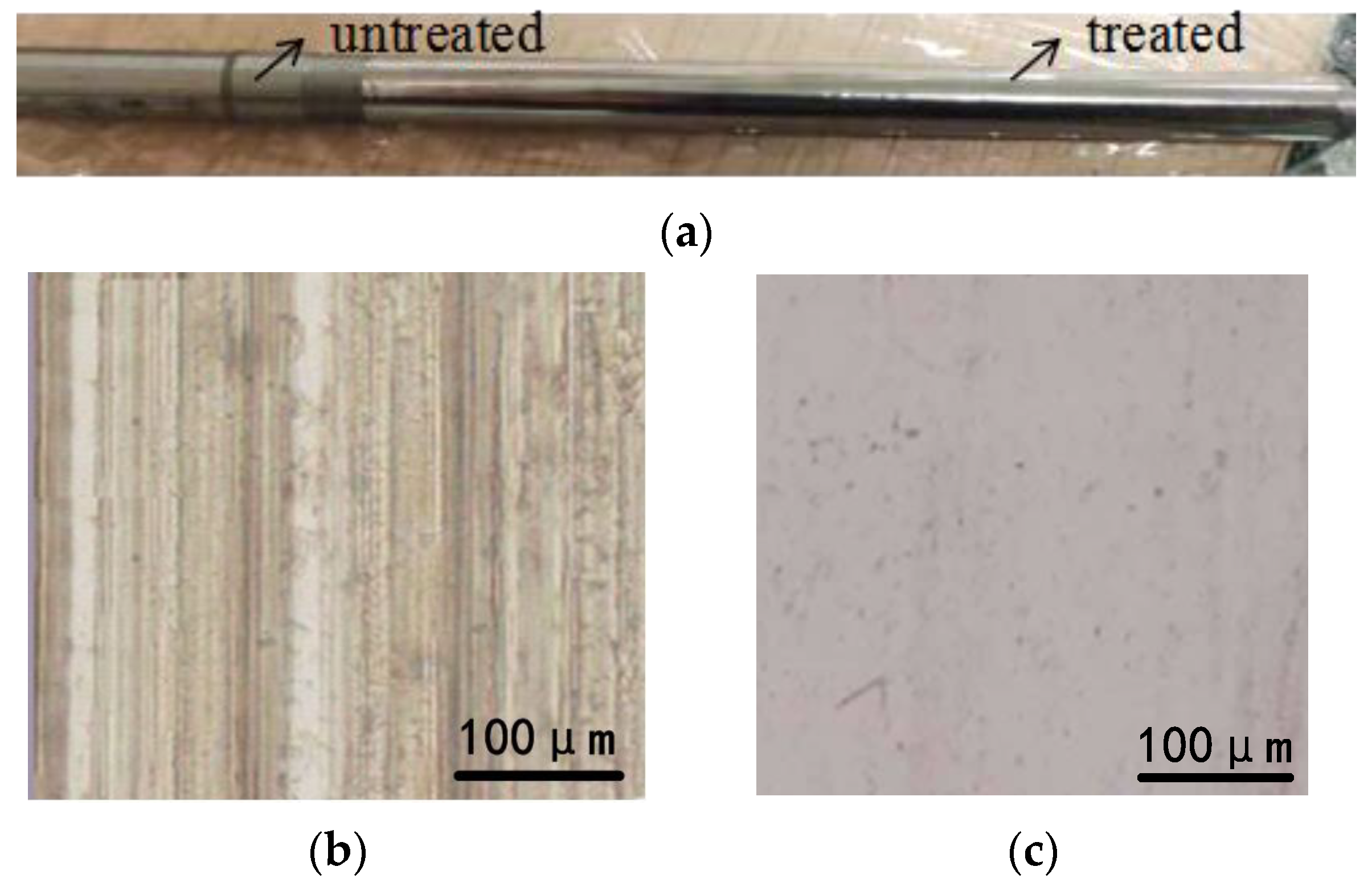


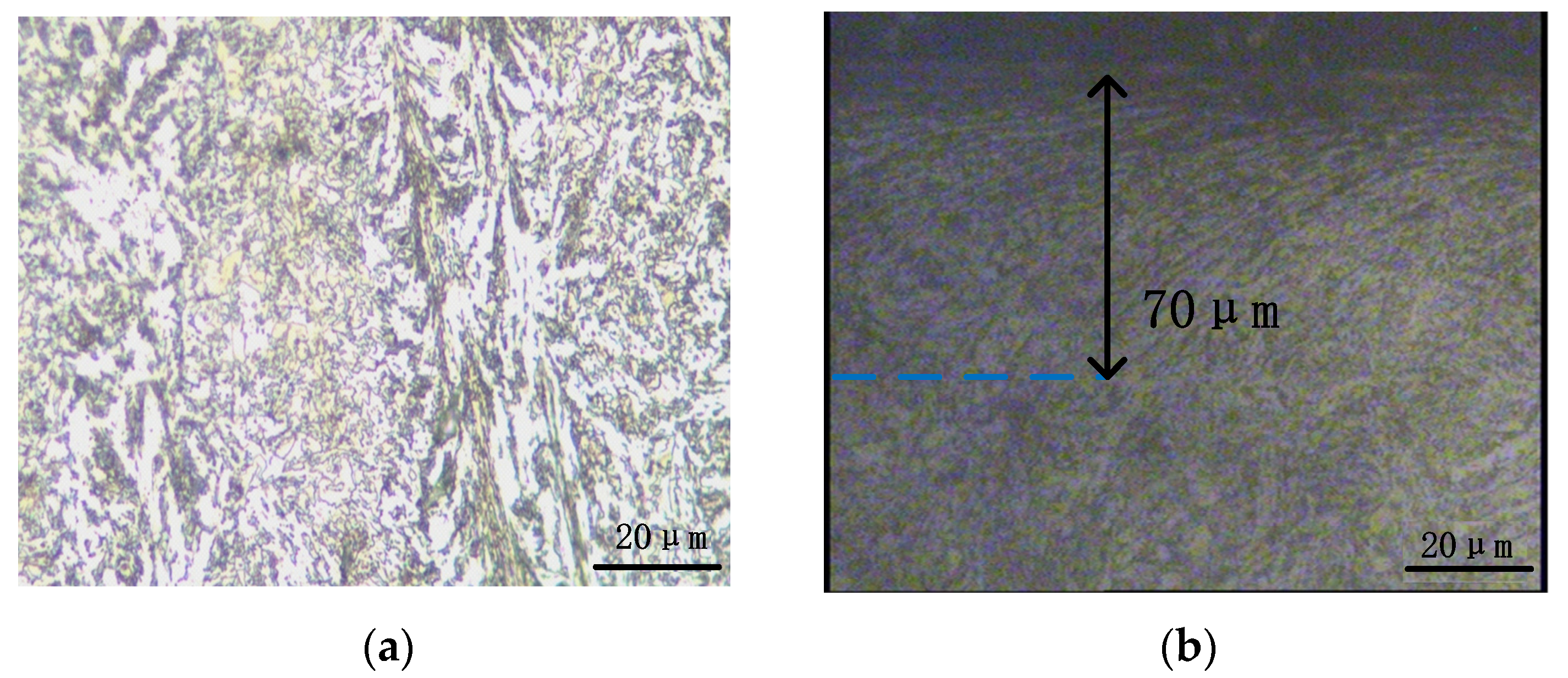
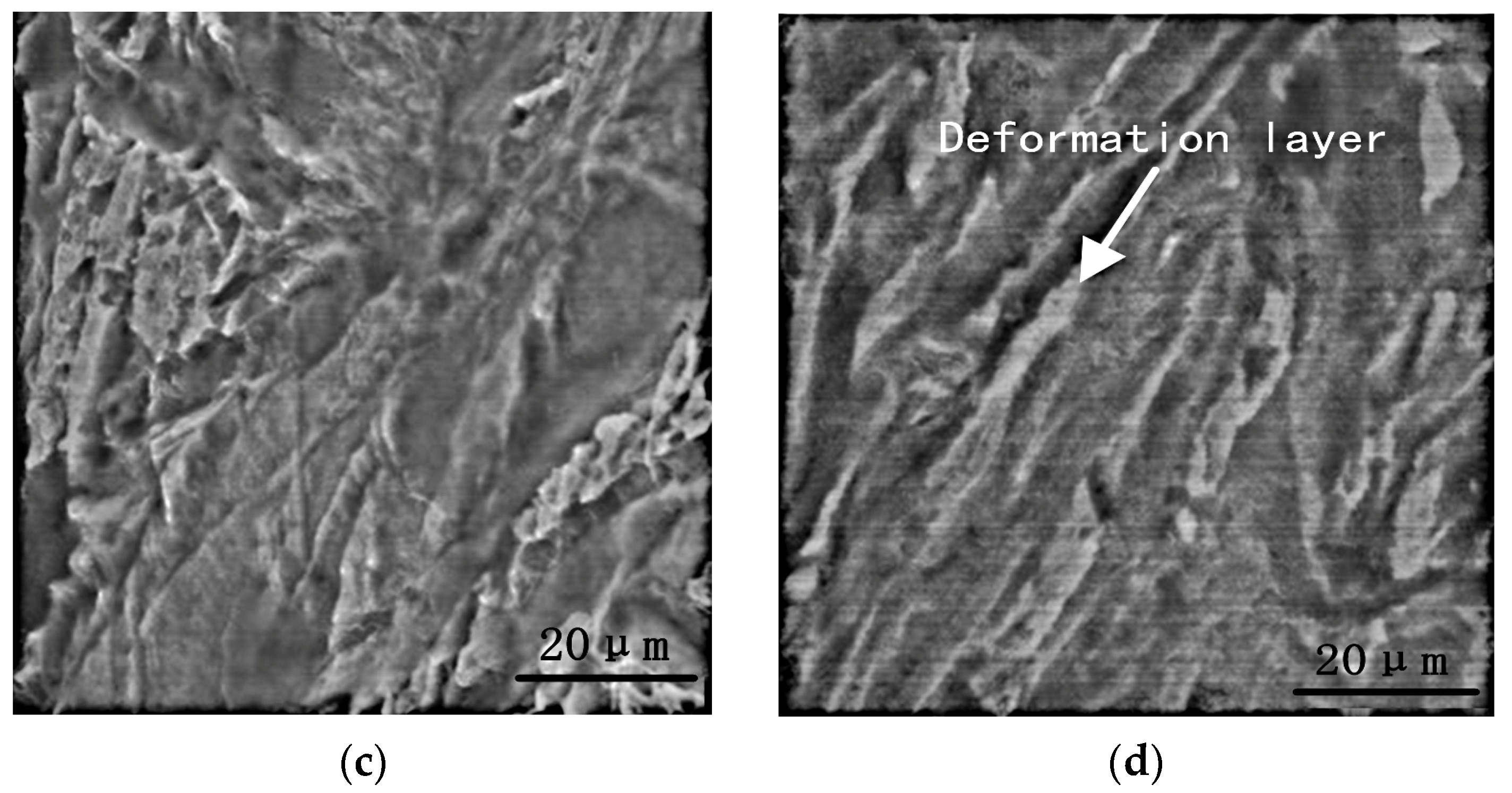
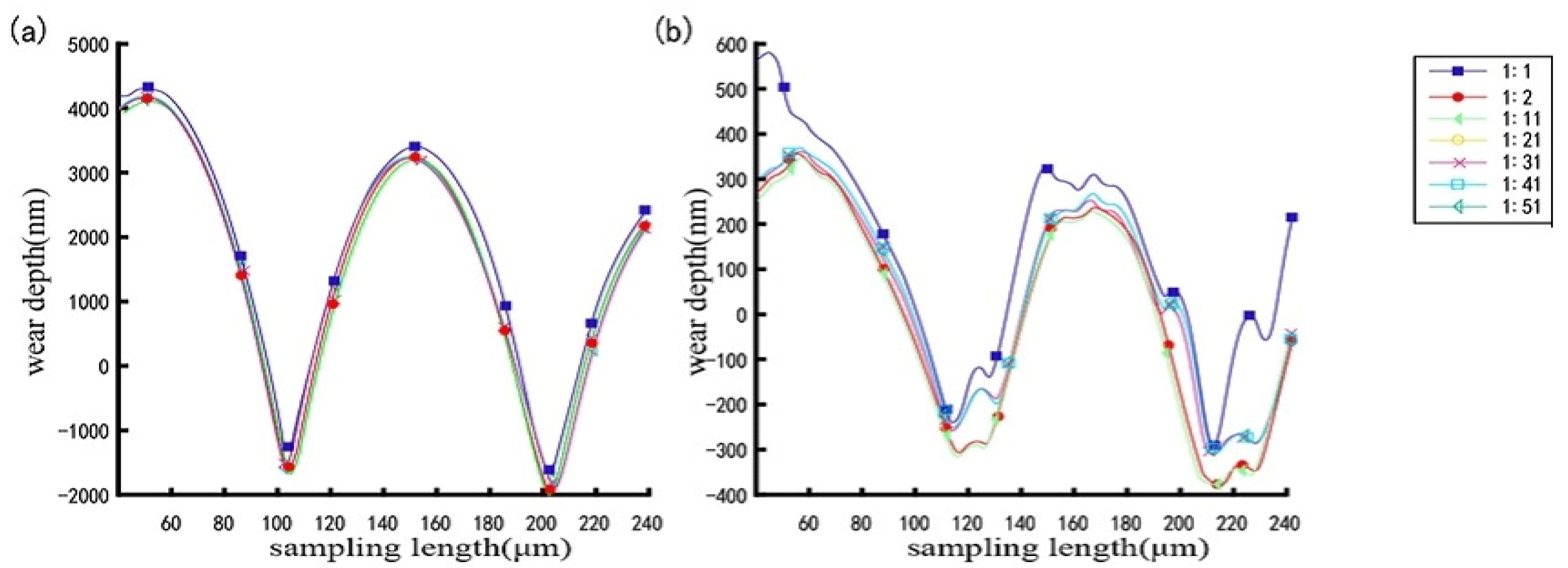
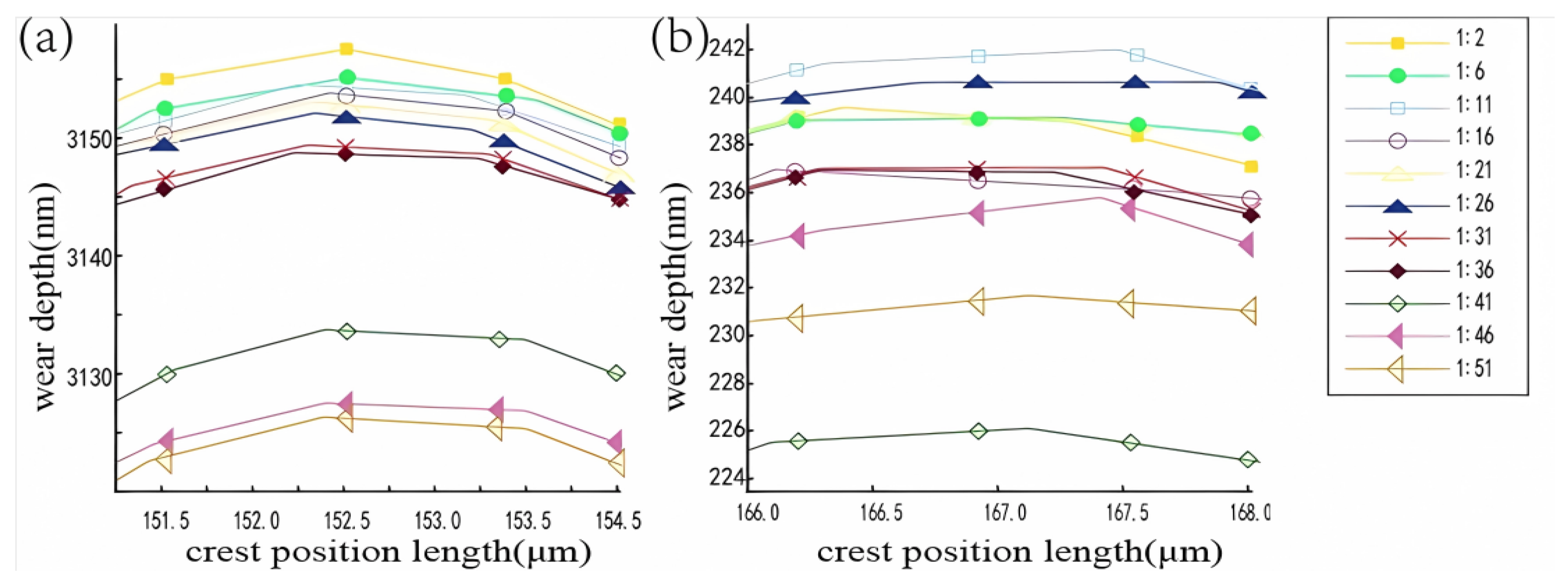
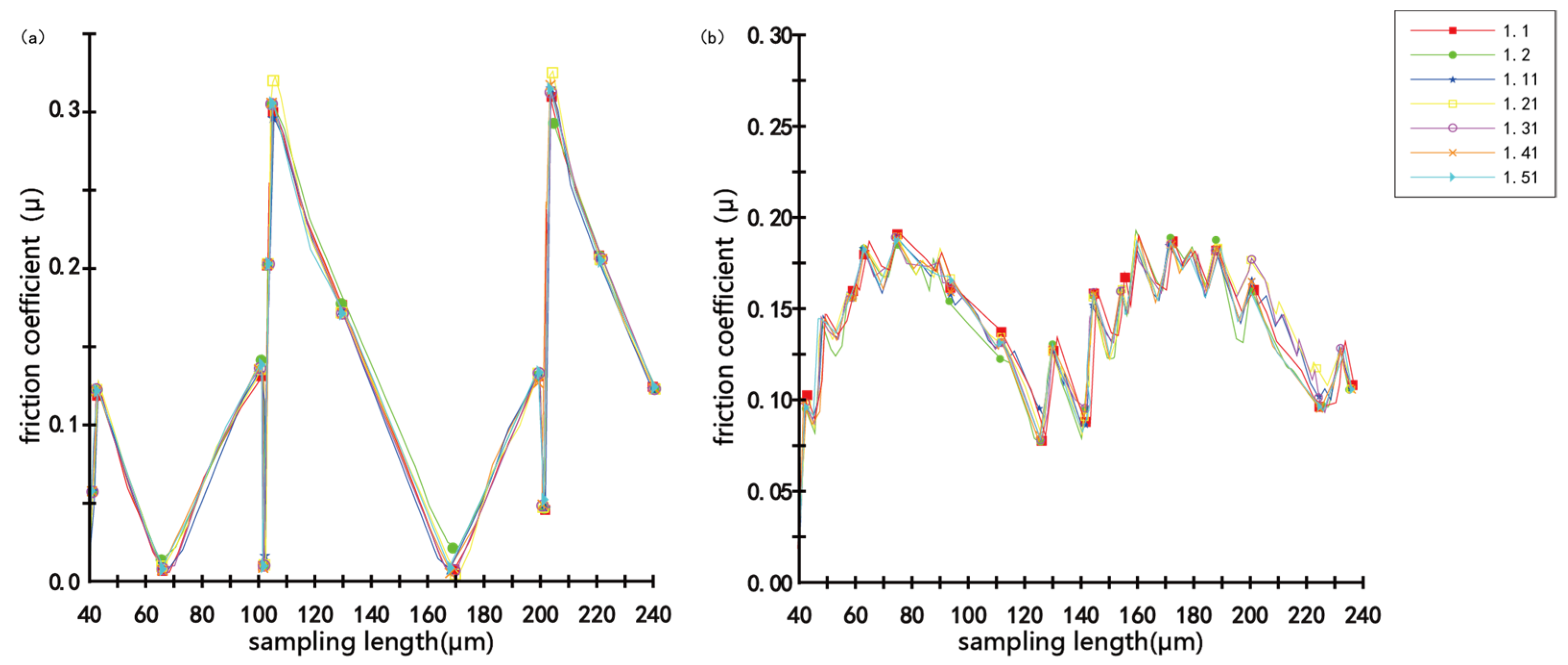
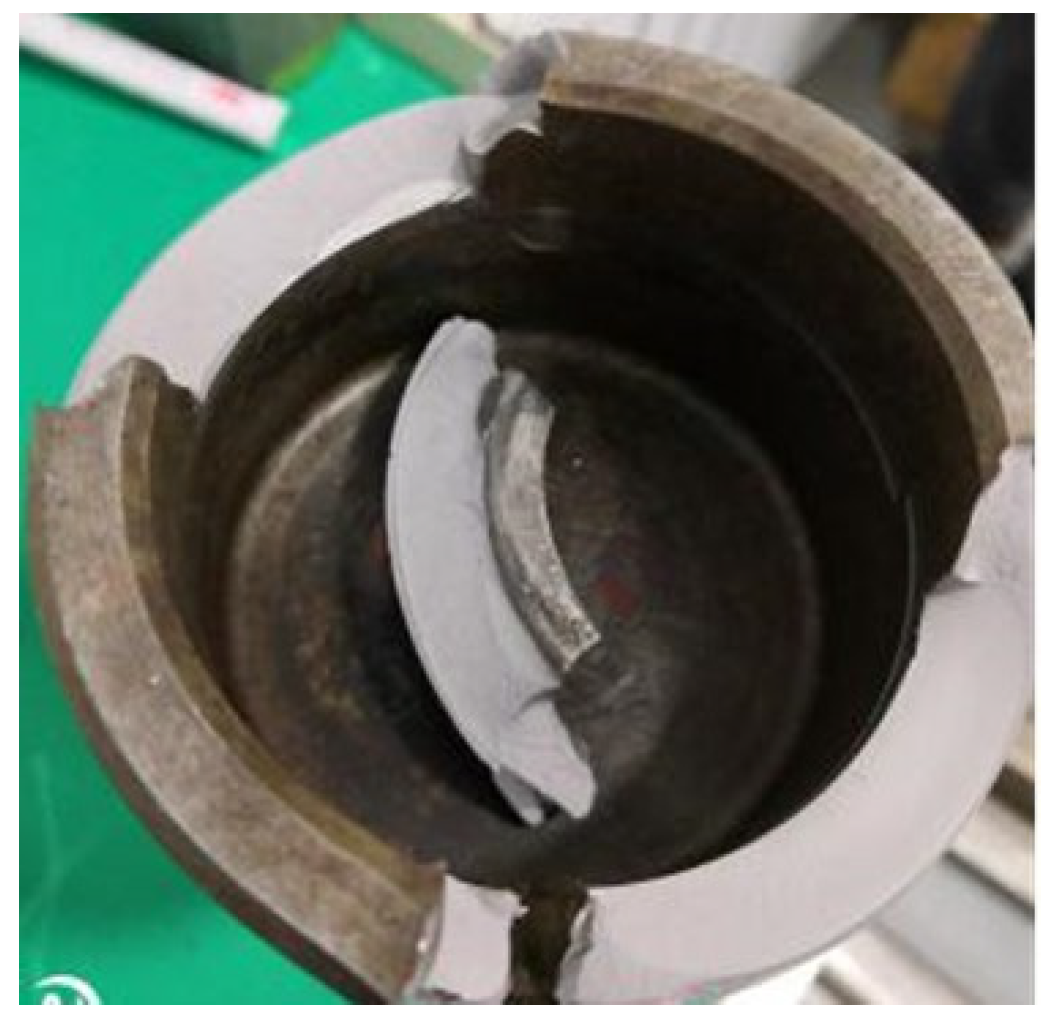


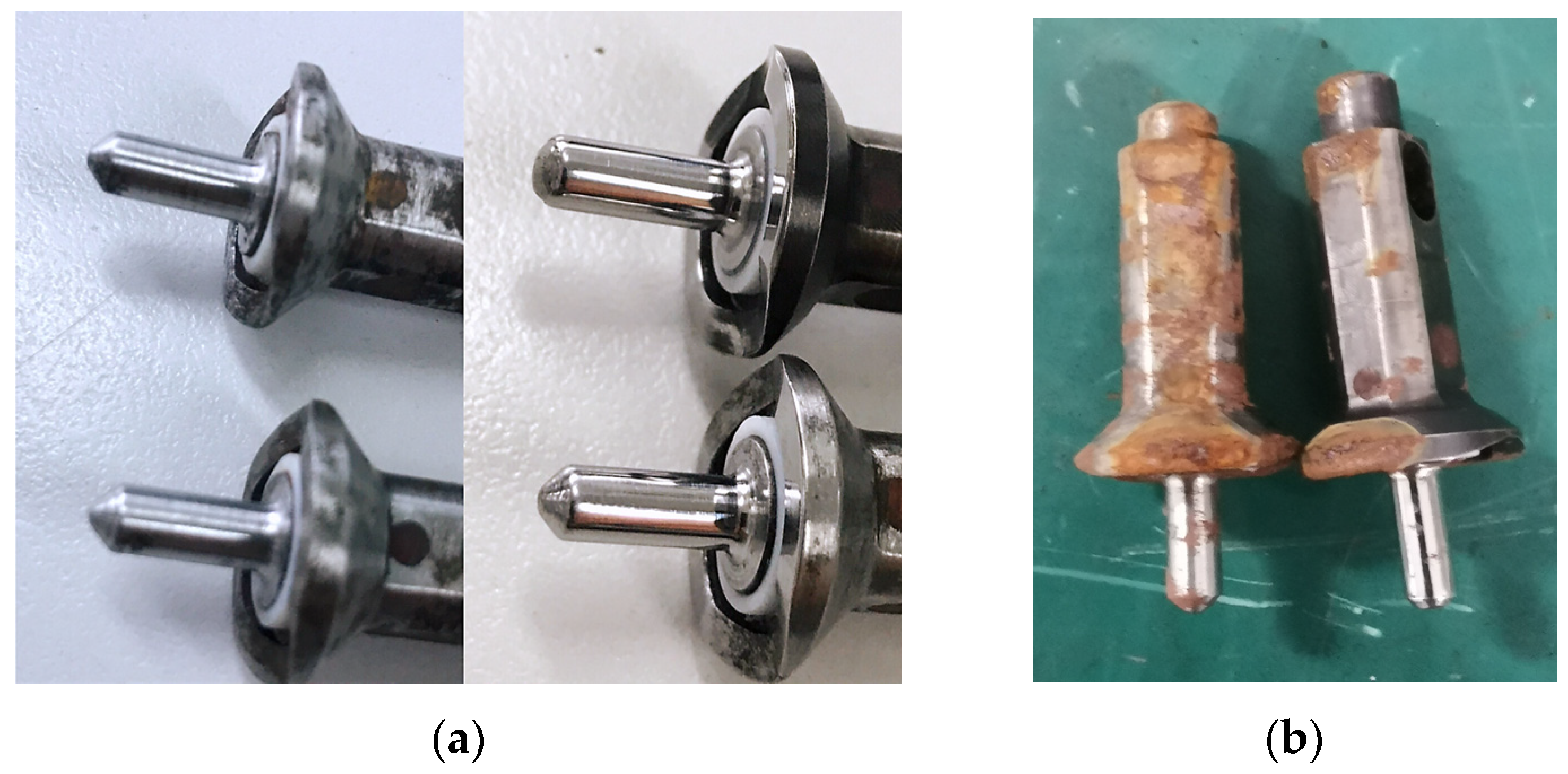
| C | 0.27~0.34 | Si | 0.17~0.37 |
|---|---|---|---|
| Cr | 0.60~0.90 | Mn | 0.30~0.60 |
| Ni | 2.00~2.40 | S | ≤0.015 |
| Mo | 0.20~0.30 | P | ≤0.20 |
| V | 0.15~030 | Cu | ≤0.20 |
| Samples | Roughness (Ra)/μm |
|---|---|
| Conventional cutting | 1.6 |
| AUMSM | 0.32 |
| Samples | Conventional Cutting | AUMSM |
|---|---|---|
| Hardness (HV) | 471 | 660 |
| Samples | Fatigue Cycle of Different Groups | ||||
|---|---|---|---|---|---|
| 1 | 2 | 3 | 4 | 5 | |
| TC | 823 | 644 | 983 | 1038 | 880 |
| AUMSM | 9422 | 11,679 | 7075 | 9770 | 10,172 |
Disclaimer/Publisher’s Note: The statements, opinions and data contained in all publications are solely those of the individual author(s) and contributor(s) and not of MDPI and/or the editor(s). MDPI and/or the editor(s) disclaim responsibility for any injury to people or property resulting from any ideas, methods, instructions or products referred to in the content. |
© 2023 by the authors. Licensee MDPI, Basel, Switzerland. This article is an open access article distributed under the terms and conditions of the Creative Commons Attribution (CC BY) license (https://creativecommons.org/licenses/by/4.0/).
Share and Cite
Liu, D.; Shen, Y.; Wang, E.; Wang, H.; Liu, J.; Wang, K.; Sun, J. Improvement of the Mechanical Properties of 30CrNi2MoVA through Ultrasonic-Milling in Certain Key Components. Coatings 2023, 13, 1626. https://doi.org/10.3390/coatings13091626
Liu D, Shen Y, Wang E, Wang H, Liu J, Wang K, Sun J. Improvement of the Mechanical Properties of 30CrNi2MoVA through Ultrasonic-Milling in Certain Key Components. Coatings. 2023; 13(9):1626. https://doi.org/10.3390/coatings13091626
Chicago/Turabian StyleLiu, Dan, Yalin Shen, Erliang Wang, Hongjin Wang, Jianbin Liu, Kaizheng Wang, and Jianhang Sun. 2023. "Improvement of the Mechanical Properties of 30CrNi2MoVA through Ultrasonic-Milling in Certain Key Components" Coatings 13, no. 9: 1626. https://doi.org/10.3390/coatings13091626





